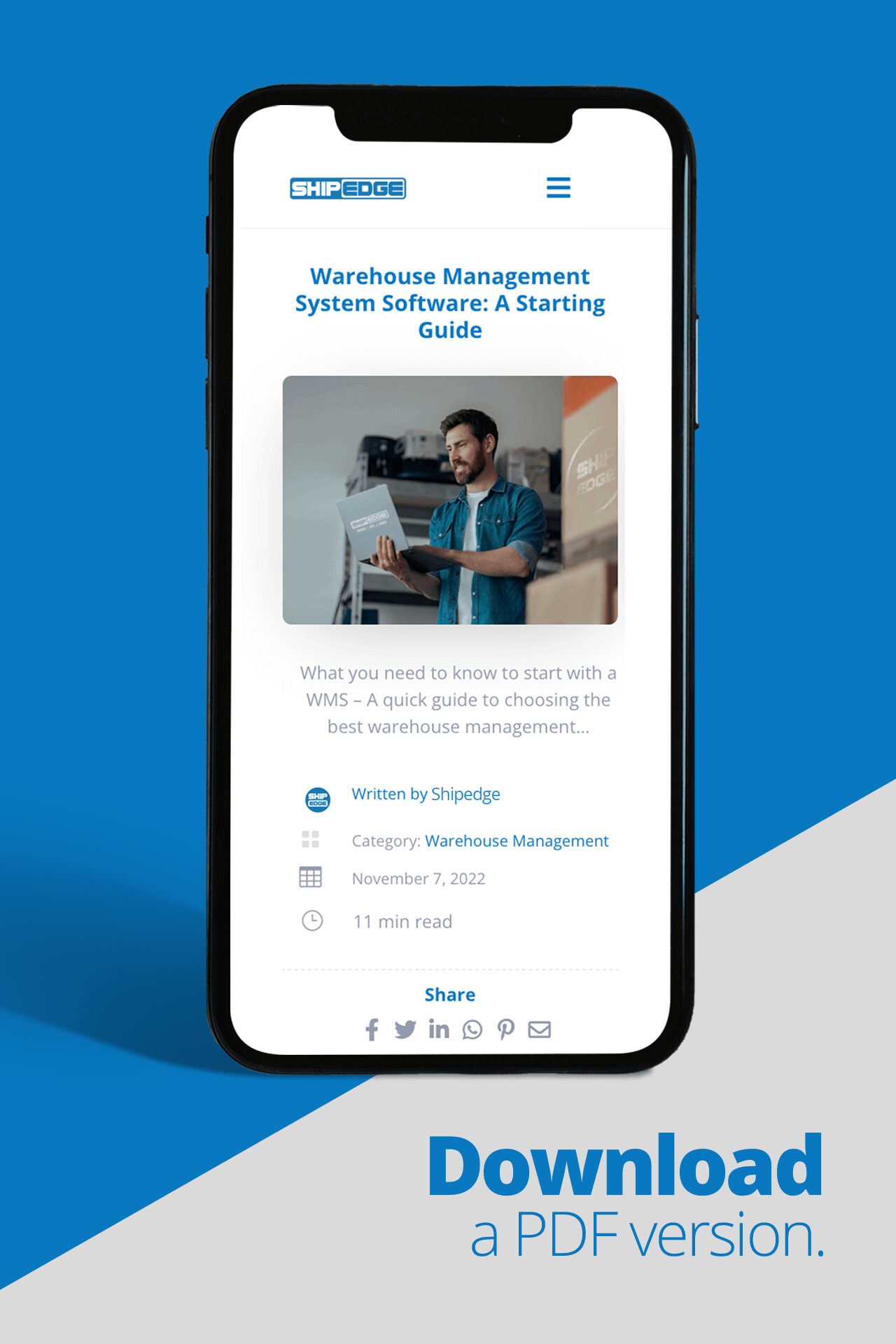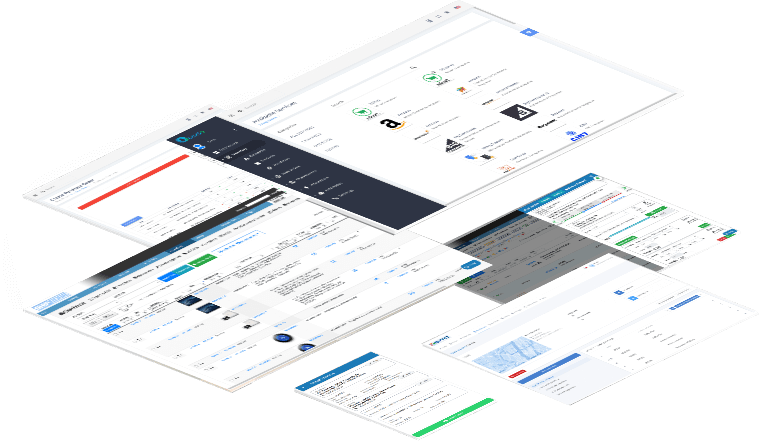Nowadays, one of the main concerns of e-commerce brands is staying relevant for their customers. To do that, more than improving marketing campaigns or user experience, gaining customer trust is ensuring that if they order a product, they will receive the product they want of the highest quality and quickest shipping time possible.
One of the many strategies businesses have adopted to keep customers satisfied is implementing inventory management techniques there ensure that it has enough stock to fulfill all requests of its customers.
With a real-time inventory management system, any company is enabled to keep track of items purchased in real-time, automatically updating the quantity available for purchase from the store’s inventory.
This article will address some of the most frequently asked questions about real-time inventory management.
5 Most Common Questions About Real-Time Inventory Management
If you prefer, use the help of the summary to improve navigation.
1 – What is real-time inventory management?
Real-time inventory management is a continuous process of recording and monitoring sales and purchases of inventory, both within and outside of a warehouse, utilizing advanced technology to provide a real-time view of inventory levels, including a record of all invoices, sales, and receipts, allowing an organization to promptly respond to supply chain needs.
READ MORE: Warehouse Management Software System: 2023 WMS trends
If you decide to implement software with real-time inventory management in your business, you’ll be able to track inventory levels at all times. This will allow your company to be more responsive to changes in customer demand and be better prepared for unexpected moments. There are several inventory management solutions available today. Find out more about some of them below and explore how they can work together.
2 – Which real-time inventory management solutions are available, and how can they work together?
Real-time inventory management software allows companies to update items sold, bought, or missing from the warehouse instantly. E-commerce companies can implement real-time inventory management by integrating their sales channels with their stock system.
Some business systems have been developed that aggregate all these functionalities in software, such as Warehouse Management Systems.
READ MORE: Warehouse Management System Software: A Starting Guide
Other inventory control tools used by third-party logistics (3PLs) are:
- Barcode scanners: These are electronic devices for reading printed barcodes. It is a scanner that contains a light source, a lens, and a light sensor to translate optical impulses into electrical ones
- RFID technology: Radio frequency identification. It is an automatic identification method that uses radio signals to retrieve and store data remotely through RFID tags
- Cloud-based WMS: External servers hosting data allows for the alignment of inventory management and fulfillment services with modern purchasing methods and provide real-time visibility into an entire inventory. Cloud-based systems may be accessed anywhere on Earth, as long as you have internet access.

A Warehouse Management System (WMS) is a tool that helps keep track of inventory in real time. It can be accessed from workstations, the mobile app, or desktop computers and helps coordinate all operations in the warehouse. It keeps track of incoming and outgoing raw materials, products, and orders to ensure constant control over inventory levels.
Employees can use barcode scanners to read product labels when goods are received and when orders are shipped. Scanned barcodes work with the WMS to track all inventory data. This information is then updated in the ERP system to make sure you always have the most up-to-date information on your stock.
Discover how our WMS can improve your business
3 – What’s the importance of using that real-time inventory management with an integrated WMS and Shipping Software?
If you are looking for solutions to improve the sales management of your business, guaranteeing a sufficient stock of all your products in your warehouse and consequently enhancing your customers’ satisfaction, a Warehouse Management System can be the answer. With a WMS, you can optimize all your inventory management in real time and combine that with the best rate shipping.
READ MORE: How to Ship More for Less: Cartonization & Best Rate Shipping
Adding a best-rate shipping feature to your WMS makes it easier to handle shipping operations. When used effectively in your business, this tool can help you:
- Reduce Shipping Costs: Automated best-price shipping allows you to set up combinations of carrier service levels under one or more rules to ship and ensure your ship at the lowest possible price;
- Diversifying carrier strategy: Keep up with the 2-day shipping standard as introduced by Amazon.
- Meet delivery expectations: Rate shopping rules can also restrict methods by regional availability and maximum transit time for your customer.
- Print shipping labels: Create and print shipping labels for your orders directly from your WMS, no need to search each website individually for the right labels.
To conclude, when the best-rate shipping feature is used with a WMS, companies have an easier time meeting their customers’ expectations, leading to higher satisfaction levels and staying relevant in the market.

Discover how our WMS can improve your business
4 – How can real-time inventory management help e-commerce brands manage multiple channels?
As companies have more and more logistics facilities and sales points (both online and offline), it’s becoming more necessary than ever to digitize inventory control with warehouse management systems. WMS programs help synchronize inventory between different areas/locations or warehouses, providing logistics managers with real-time information about the inventory status in each warehouse location or sales point.
For example:
- Suppose a brand sells on both Amazon and Shopify simultaneously and only has one item left in stock at the warehouse, but wants to list it on both channels to increase the probability of a sale. By integrating all the selling channels the brand is using into a centralized inventory management system, inventory levels will be automatically communicated to remove the listing from Amazon as soon as the item sells on Shopify.
Implementing a real-time inventory management system in your e-commerce business has many benefits, both for managing storage and promoting better control of the brand’s different points of sale. This process will prevent the sale of products that no longer exist, which will consequently have a significant impact on consumer expectations.
READ MORE: The Importance of Guaranteeing Safety and Security Compliance in Warehouses
5 – How to implement real-time inventory management in e-commerce businesses?
The digital revolution in warehouses has enabled logistics managers with tools that allow them to obtain more detailed information on stock quantities in every warehouse or store in real-time.
For example:
- In the past, companies managed their inventory using Excel Spreadsheets, manually tracking incoming and outgoing orders.
Now, with a Warehouse Management System in place, all order-related information is automatically updated.
During the implementation process of the software, the logistics manager and intralogistics provider will work together to set up rules and criteria that make the automation processes easier. In addition to real-time inventory control, Shipedge’s WMS also acts as the central hub for all warehouse operations, such as product traceability, location management, and order tracking.
READ MORE: Third-Party Logistics: Essential Guide to e-commerce order fulfillment
If you are looking for comprehensive, inventory management software, Shipedge’s WMS may be a good fit for your company. Our services include, but are not limited to:
- The best shipping rate: that will make your orders come to customers in the quickest time.
- Cartonization tools: that will enable to reduces the costs with the deliveries.
- The best tools for real-time inventory management: cloud-based WMS, barcode scanning, shipping tools, and more
Stay up-to-date on the latest information about our services and get tips on improving your sales and customer satisfaction by following us on social media. If you have any questions, feel free to reach out to us at any time.
Discover how our WMS can improve your business














0 Comments